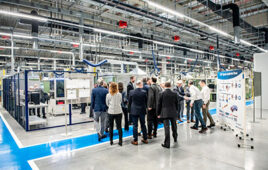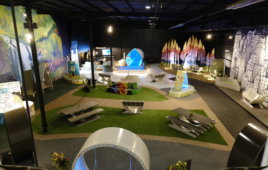My 14-year old daughter Maggie is obsessed with James Cameron’s masterpiece Titanic. If I gave her the opportunity, she’d watch it in continual loop all day, every day (she just received the anniversary edition for meeting one of the goals my wife Beth and I had for her at school — she literally spent all day Sunday watching it).
Well, now I love James Cameron, too, but not solely for Titanic. Cameron has moved into my pantheon of solar heroes. I got a great email from Dan Arendt from Stellar Energy, a large-scale solar energy project developer and systems integrator, announcing that they had just completed a a 960 KW solar project that will provide clean energy to James Cameron’s Lightstorm Entertainment Inc., his film-making company.
The solar energy system consists of three large roof-mounted photovoltaic arrays and features 3,692 solar modules and three inverters, which produce enough electricity to power LEI’s sound stages and offices at Manhattan Beach Studios (MBS) Media Campus, a state-of-the-art production lot in Manhattan Beach, Calif.
LEI was determined to harness pure and clean solar energy to power their highly anticipated sequels to AVATAR, the highest grossing film of all time. Adding these solar energy systems to the studio’s rooftops was crucial to making the production of the next AVATAR films as energy efficient as possible.
The solar modules were installed on the studio’s state of the art sound-proof barrel-shaped roofs, which required a custom designed mounting system to follow the contours of the roof. This design provided maximum power output and minimized roof penetrations. To help retain the limited parking space available at the studio campus, the system’s inverters were installed on the buildings’ roofs. To add to the complexity of the construction process, Stellar Energy worked hand in hand with Raleigh Studios management, and each active sound stage’s production team to ensure that zero disruptions occurred during the filming of many leading television and movie shoots.
I must admit I haven’t seen the original Avatar, but I’ll probably go back and watch it now — and I’ll definitely buy tickets to see the next solar-powered one. Thanks, Mr. Cameron — between your visibility and President Bill Clinton’s advocacy, we might just make solar standard operating procedure here in the United States.
I can’t wait.
Filed Under: Green engineering • renewable energy • sustainability, Student programs




